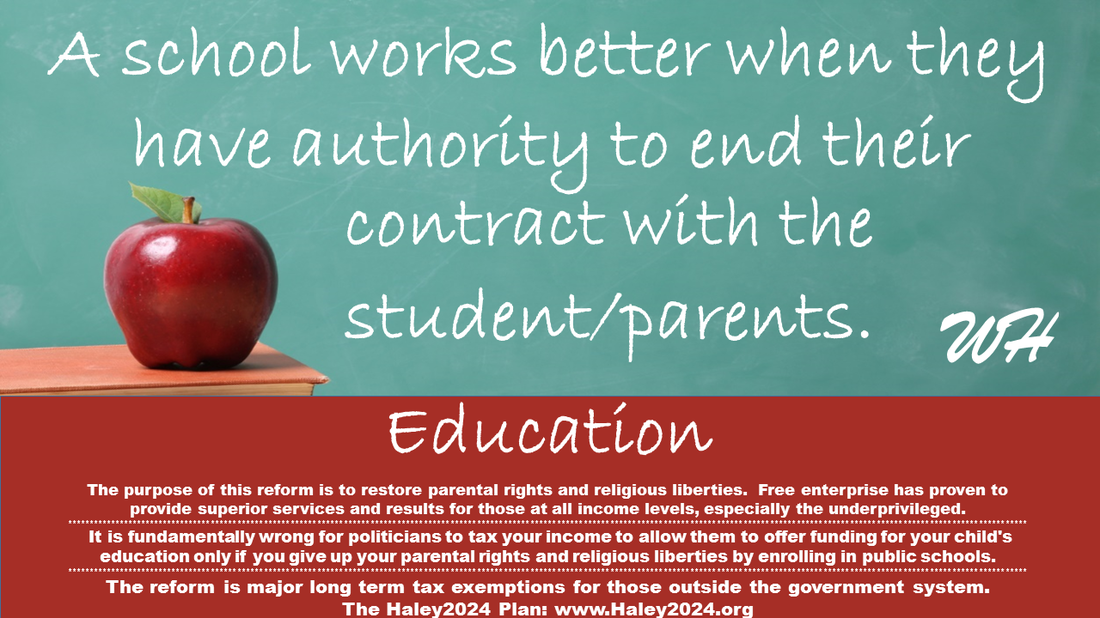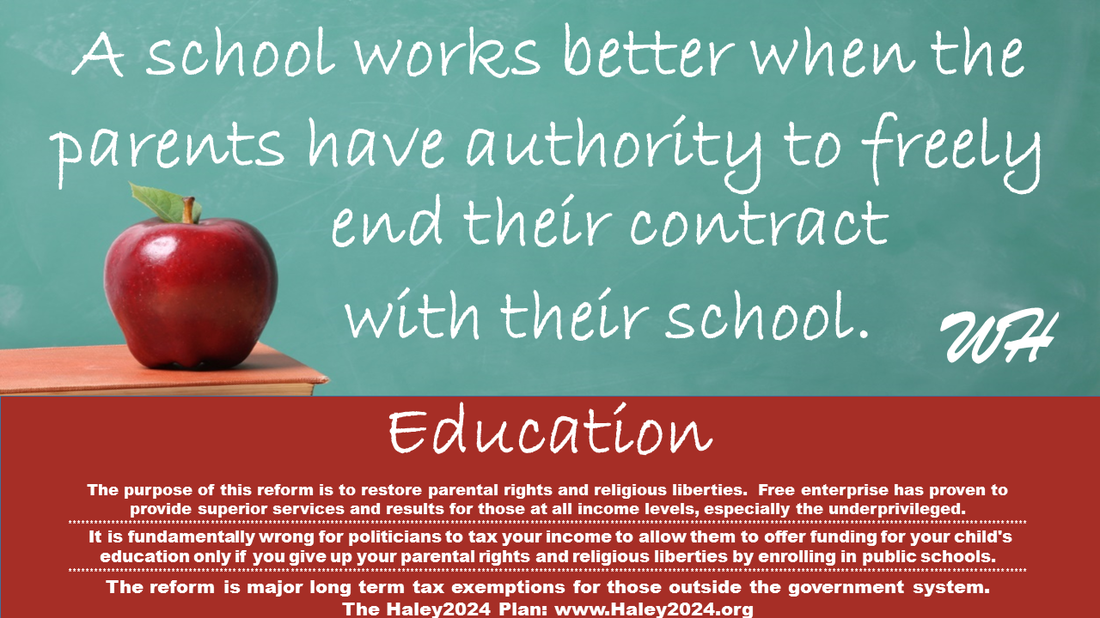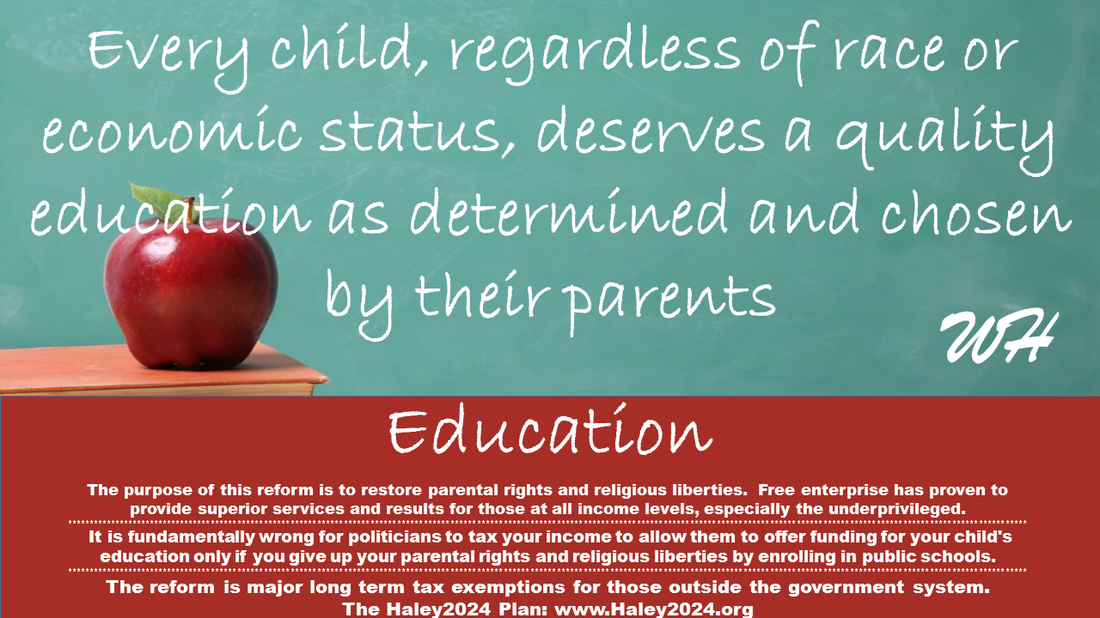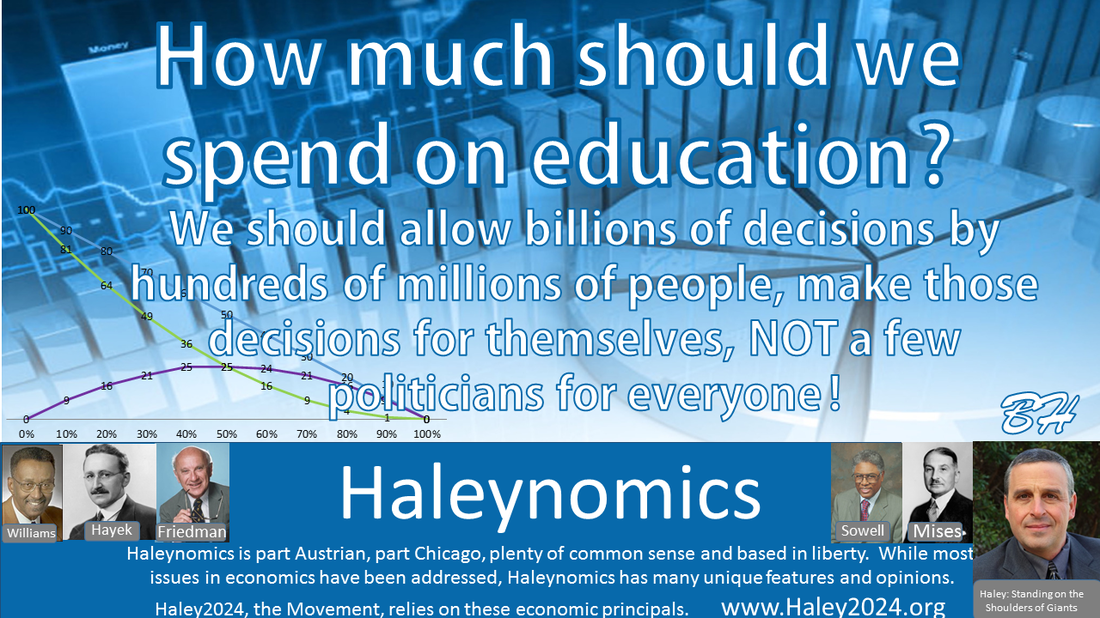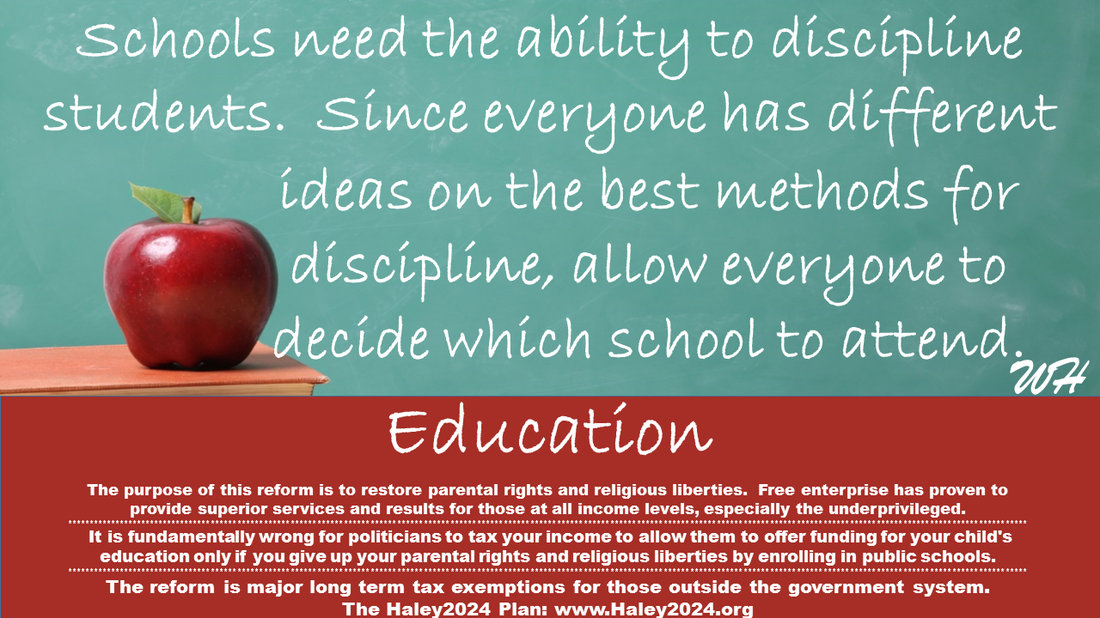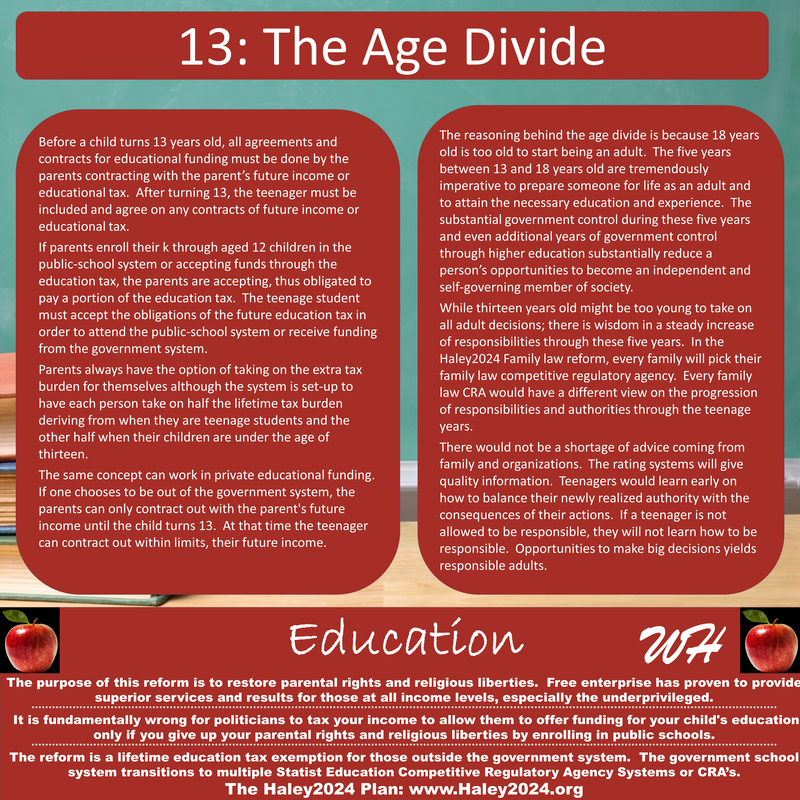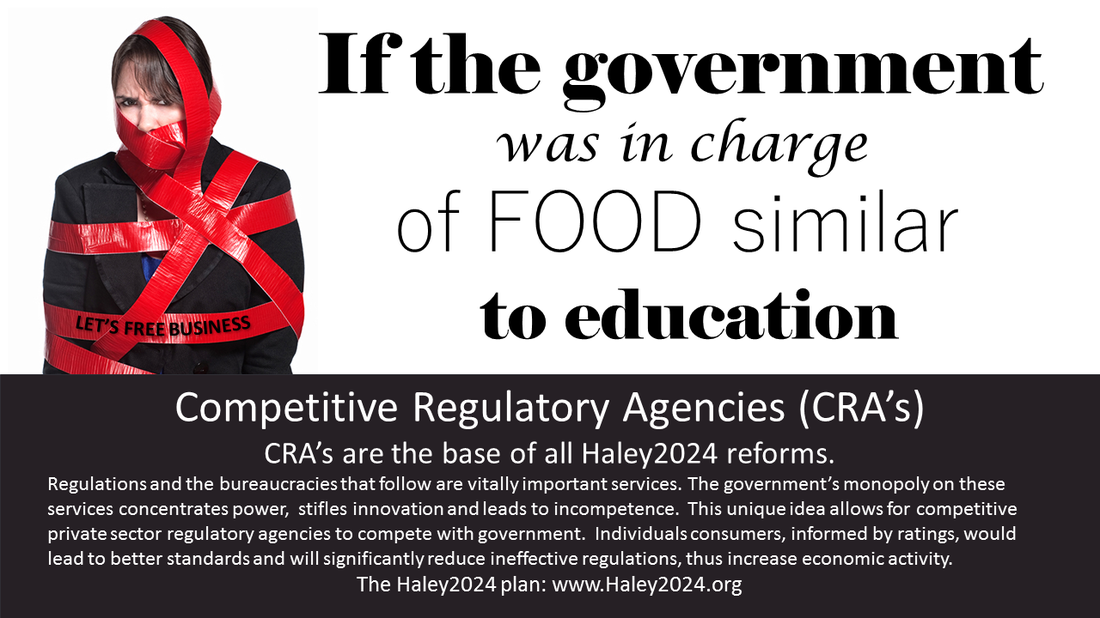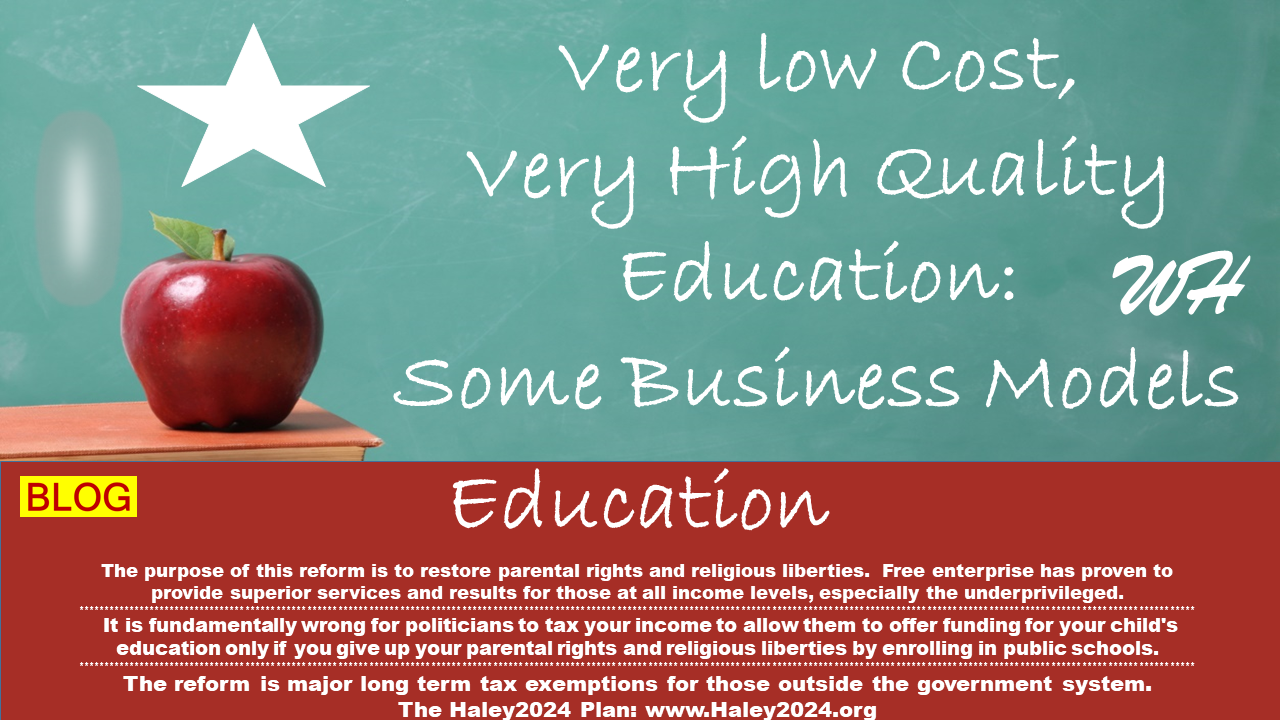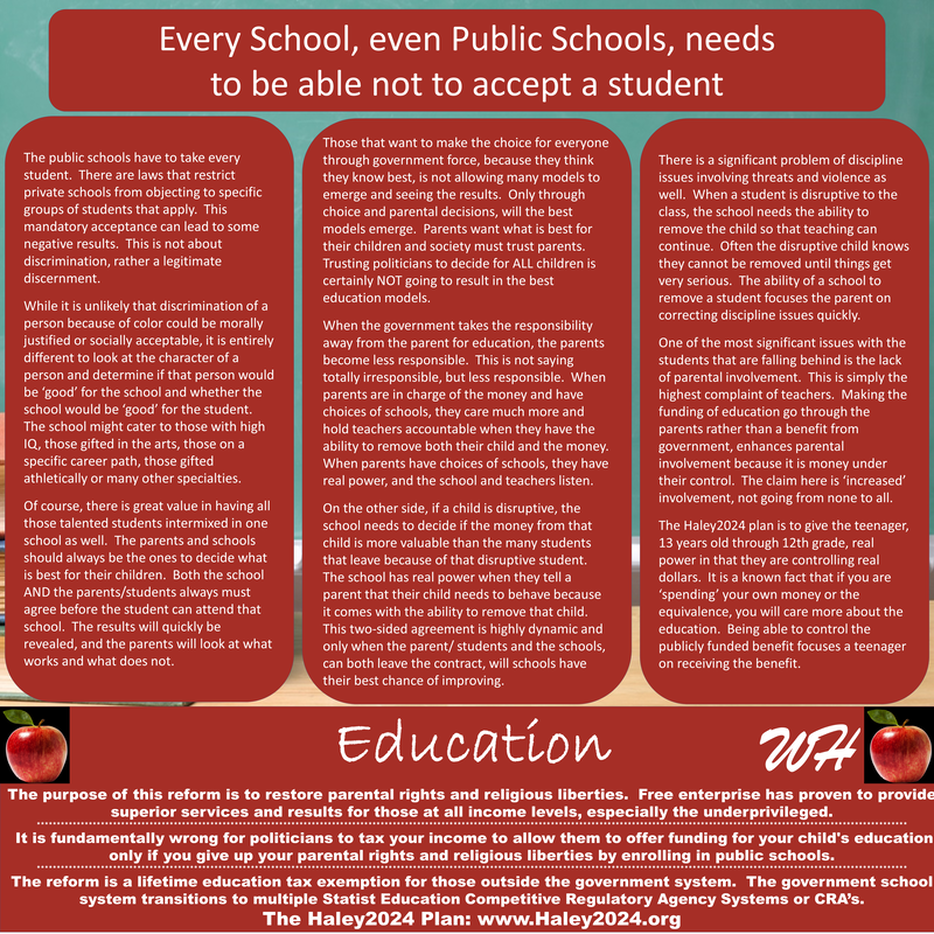| While it is unlikely that discrimination of a person because of color could be morally justified or socially acceptable, it is entirely different to look at the character of a person and determine if that person would be ‘good’ for the school and whether the school would be ‘good’ for the student. The school might cater to those with high IQ, those gifted in the arts, those on a specific career path, those gifted athletically or many other specialties. |
| Of course, there is great value in having all those talented students intermixed in one school as well. The parents and schools should always be the ones to decide what is best for their children. Both the school AND the parents/students always must agree before the student can attend that school. The results will quickly be revealed, and the parents will look at what works and what does not. |
| Those that want to make the choice for everyone through government force, because they think they know best, is not allowing many models to emerge and seeing the results. Only through choice and parental decisions, will the best models emerge. Parents want what is best for their children and society must trust parents. Trusting politicians to decide for ALL children is certainly NOT going to result in the best education models. |
| When the government takes the responsibility away from the parent for education, the parents become less responsible. This is not saying totally irresponsible, but less responsible. When parents are in charge of the money and have choices of schools, they care much more and hold teachers accountable when they have the ability to remove both their child and the money. When parents have choices of schools, they have real power, and the school and teachers listen. |
| On the other side, if a child is disruptive, the school needs to decide if the money from that child is more valuable than the many students that leave because of that disruptive student. The school has real power when they tell a parent that their child needs to behave because it comes with the ability to remove that child. This two-sided agreement is highly dynamic and only when the parent/ students and the schools, can both leave the contract, will schools have their best chance of improving. |
| There is a significant problem of discipline issues involving threats and violence as well. When a student is disruptive to the class, the school needs the ability to remove the child so that teaching can continue. Often the disruptive child knows they cannot be removed until things get very serious. The ability of a school to remove a student focuses the parent on correcting discipline issues quickly. | |
| One of the most significant issues with the students that are falling behind is the lack of parental involvement. This is simply the highest complaint of teachers. Making the funding of education go through the parents rather than a benefit from government, enhances parental involvement because it is money under their control. The claim here is ‘increased’ involvement, not going from none to all. |
| The Haley2024 plan is to give the teenager, 13 years old through 12th grade, real power in that they are controlling real dollars. It is a known fact that if you are ‘spending’ your own money or the equivalence, you will care more about the education. Being able to control the publicly funded benefit focuses a teenager on receiving the benefit. |
